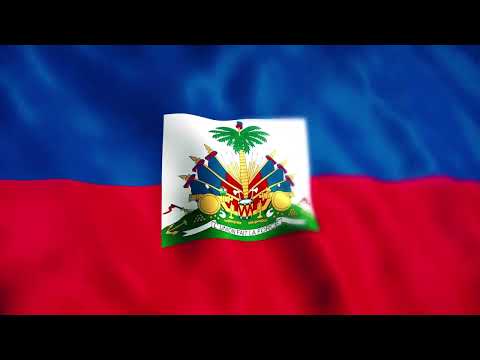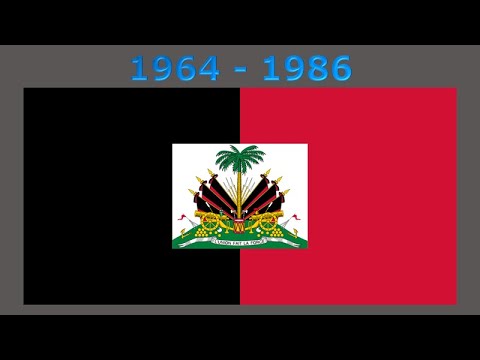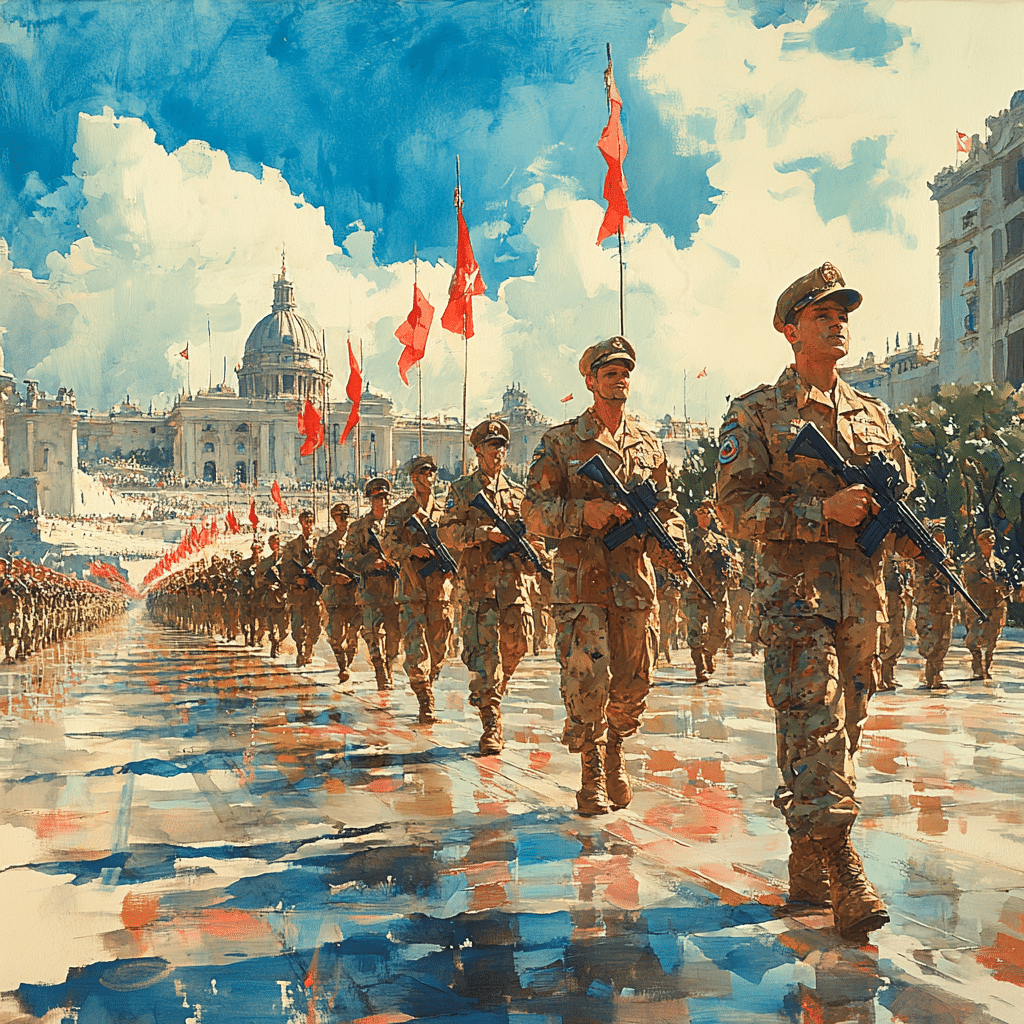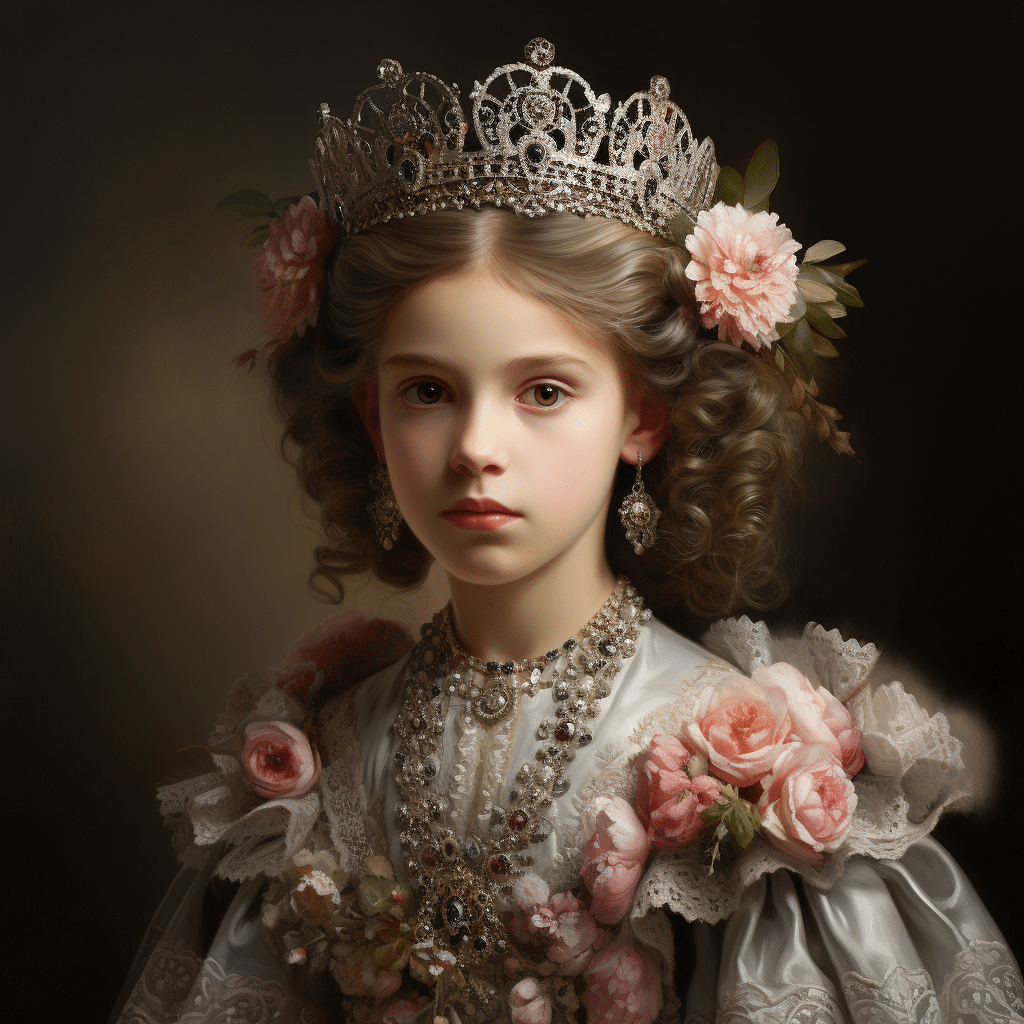The Haiti Flag: A Symbol Resonating Freedom & Unity
The Haiti flag flutters in the Caribbean breeze, a testament to a storied past of defiance and cooperation. It’s a vibrant mosaic of history, a rallying point for unity, and a beacon of freedom recognized around the globe. With deep roots in the Haitian Revolution and the proud distinction as the banner of the world’s first black-led republic, the Haiti flag embodies the indomitable spirit of its people and the fiery quest for sovereignty. Today, we dive into this potent symbol, unearthing its rich tapestry of meaning and influence that spans from the heart of Haiti to the far reaches of the diaspora.

Origins of the Haiti Flag: A Revolutionary Birth
Picture the year 1803; the air in Haiti hums with the murmurs of revolution. It’s a time when the courage of slaves and free people of color alike upends the harrowing institution of colonialism. The Haiti flag is conceived in an act of bold rebellion, as General Jean-Jacques Dessalines, seizing upon the spirit of revolt, commands the removal of the white band from the French tricolor — a powerful rebuke to the colonial order. This decisive rupture births a new emblem: the merging of blue and red fabric, a symbol masterfully sewn by Catherine Flon, to represent the unity of African and Mulatto communities against their oppressors. From the smoke of the Haitian Revolution rises the first black republic on January 1, 1804, punctuating its arrival with a flag that would come to signify the triumph of freedom over bondage.

| Aspect | Details |
|---|---|
| Flag Design | Bicolour flag with horizontal blue (top) and red (bottom) bands |
| Central Emblem | White rectangular panel bearing the coat of arms |
| Coat of Arms | Depicts a trophy of weapons atop a green hill, a royal palm symbolizing independence, with the Cap of Liberty on top |
| Flag Adoption Date | May 18, 1803 |
| Symbolism | Blue and red bands symbolize the alliance between the blacks and mulattoes |
| Historical Significance | World’s first black-led republic upon gaining independence on January 1, 1804 |
| Initial Creator | Catherine Flon by the direction of Jean-Jacques Dessalines |
| Constitutional Reference | Confirmed by Article 192 of the Constitution of 1843 |
| Dessalines as Emperor | Proclaimed on October 8, 1804, taking the name Jacques I |
| Alternate Flag Design (1805) | Two vertical bands; black (representing death) and red (representing freedom) |
| Independence from | European rule, specifically France |
| Historical Context | Second nation in the Western Hemisphere to gain independence after the United States in 1776 |
Designs Throughout History: The Evolution of an Emblem
Since that revolutionary dawn, the Haiti flag has mirrored the nation’s tumultuous journey. Over the centuries, its design has been a canvas on which changing ideologies and power tides are painted. From the Emperor Dessalines’ regal adoption of the black and red vertical bands in 1805 to the later re-affirmation of the blue and red under President Alexandre Pétion, the flag has twisted and turned with the nation’s fortunes. The Constitution of 1843 codified the bi-colored flag we recognize today, and its every alteration has offered a glimpse into the era’s political climate — a silent witness to Haiti’s enduring quest for an identity forged in the crucible of its own aspirations and challenges.

The Coat of Arms: Decoding the Haiti Flag’s Heart
At the heart of the flag sits its coat of arms, an emblem often overlooked yet teeming with significance. It’s an allegorical snapshot: the trophies of arms ready to defend, the green hill, and the quintessential royal palm crowned by the Cap of Liberty. These icons are not mere decorations but the narrative threads of Haiti’s history. The Phrygian cap, reminiscent of the French Revolution, bonds the quest for freedom with universal calls for human rights, while the palm, a symbol of tropical resilience, stands tall — a reminder of the collective strength needed to sustain independence. Each element is a chronicle of past glories and pains, of hopes resting on the horizon.

The Flag in Modern-Day Haiti: Representation and Identity
Today, the Haiti flag is more than a patriotic symbol; it’s an integral part of the Haitian consciousness. Whether unfurled in celebration on Flag Day, May 18th, or clutched during protests as a sign of resistance, the flag pulsates with life. In the hands of schoolchildren, it’s a patchwork of lessons; in the heart of a protester, it’s a cry for change. We’ve listened to the stories of those who gaze upon its colors with pride, those who see in its folds tales of ancestors who fought valiantly for the freedoms they cherish today.

Educational and Cultural Manifestations of the Haiti Flag
The flag’s narrative weaves itself into the fabric of Haiti’s educational mission and cultural output. It speaks without words in the classrooms where Haiti’s history is passed down and within the vibrant artworks that splash color onto Port-au-Prince’s street canvases. Heroes of freedom find immortality in song and story, each verse a thread in the flag’s grand tapestry. From the poignant strokes of a painter’s brush to the stirring lines of a poet’s pen, Haiti’s flag remains a muse, inspiring a people to cast their eyes back in reverence and forward in hope.
Global Recognition: The Haiti Flag on the International Stage
The Haiti flag has shouldered its narrative of liberation onto the international stage, its colors a herald of the enduring struggle for sovereignty and dignity. As a symbol, it invokes solidarity among nations, whether through the links of diplomatic engagement or the shared heritage celebrated across the Haitian diaspora. When the flag is raised at global forums or unfurls in cities far from home, it’s an avatar for a country with a message that resonates universally: unity, strength, freedom.
The Legacy and Future of the Haiti Flag
Looking forward, the Haiti flag stands sentinel to both legacy and possibility. As Haiti faces contemporary challenges, some see in its stripes the same indomitable spirit that led to the felling of colonial chains — an emblem ripe to galvanize anew, to incite hope, and to stoke the flames of progress. The flag is not just dyed fabric; it’s the skin of a nation, scarred and beautiful, enduring and ever-renewed.
In closing, let us remember: the Haiti flag is no mere symbol; it’s a promise inscribed in blue and red, a reminder of battles won and the ongoing struggle for a brighter tomorrow. It’s a country’s soul draped across poles and hearts alike, an homage to history and a beacon for the future. As we have journeyed through the tales of this storied ensign, let us hold dear the truth that within its fibers lies the essence of Haiti — a testament as alive today as it was at its revolutionary inception.
The Vivid Heritage of the Haiti Flag
Oh, the stories woven into the fabric of the Haiti flag! You might find it as mesmerizing as the acting range of Audra Mcdonald, but did you know that this emblem of freedom and unity originally emerged during a pivotal moment in 1803? Just imagine the fervor of revolutionaries, akin to the drama of a China Taiwan war, as they altered the French Tricolore by removing the white band. This symbolic act united the black majority and the gens de couleur to form an inseparable alliance against their oppressors. Much like a plot twist in a high stakes drama, this change represented more than a new nation; it illustrated a groundbreaking shift toward a society striving for equality.
Diving into the hues, the blue and red of the Haiti flag are not just a random pick—no sir! They resonate with significance as profound as the depth in Cassie Ventura ‘s latest album. Blue embodies the freed slaves, while red stands for the mixed-race people—both essential elements in the rich tapestry of Haiti’s history. It’s like finding harmony and luxury in the most unexpected place, somewhat reminiscent of those hidden gems among Switzerland Hotels that offer both comfort and surprising cultural connections.
A Symbol for All Seasons
Speaking of seasons, Haiti’s flag isn’t just for ceremonial hoisting; it’s a dynamic symbol that has evolved with the times. Picture this: it’s as adaptable as the skincare routine from Hero Cosmetics that changes with the climate. From an independence flag featuring a palm tree capped with the Phrygian cap of liberty, to variations reflecting political shifts, the flag’s design is a chameleon that mirrors the nation’s ongoing saga.
And just when you thought it couldn’t get more engaging, think again! Interestingly, the vibe of the Haiti flag is akin to the adventure and excitement you’d get in a game like Kid Icarus uprising. Its tale is a rollercoaster, marked by years of dictatorship followed by eras of democratic aspiration. Amid the ever-changing political landscape, the flag stands tall—much like the heroes in our favorite epics—ushering in unity and echoing the call for liberty. Now, isn’t that something to marvel at? It’s about as intriguing as the hidden stories behind the smiley crew members on reality shows like Aesha Below deck.
Ever-evolving and packed with pride, the Haiti flag is certainly not just another Dic pic to be glanced over. It’s a complex narrative of struggle, resilience, and hope—a vivid reflection of the human spirit. Now, that’s a piece of trivia that’s worth tucking under your hat!

What was Haiti original flag?
– Haiti’s original flag was a game-changer, you know? Crafted on May 18, 1803, when Jean-Jacques Dessalines booted the white band from the French flag – talk about making a statement! This left two bands, blue and red, sewn together by Catherine Flon, symbolizing a united front between the blacks and mulattoes.
What is Haiti famous for?
– Ah, Haiti, famed far and wide as the world’s first black-led republic! It’s a place of triumph, snatching independence from European rule on January 1, 1804, hot on the heels of the U.S. It boasts a rich history, vibrant culture, and oh, can’t forget the sheer tenacity of its people!
What does the black and red Haitian flag mean?
– Talk about a flag with a backstory! The black and red Haitian flag, unfurled by Emperor Jacques I (aka Dessalines) on May 20, 1805, packs a punch with black representing death and red crying out for freedom. It was a bold expression of the nation’s fight and spirit.
What is Haiti’s current flag?
– Haiti’s current flag, well, she’s a beauty – two broad stripes of blue over red, jazzed up with this white panel smack in the middle featuring a coat of arms that’s all about independence and readiness to defend freedom.
Are Haitians Hispanic?
– Hey now, don’t get tangled up here! Haitians predominantly trace their roots to African descendants, not Hispanic groups. So nope, they’re not typically lumped in with the Hispanic crowd, mixing a whole different cultural cocktail.
Do they speak French in Haiti?
– You bet they speak French in Haiti! But wait, there’s more; they’ve got their own linguistic twist — Haitian Creole, a spicy mix with French vibes and a dash of African dialects, making it uniquely Haitian.
What part of Africa are Haitian from?
– Dialing back to Haiti’s roots, the majority of Haitians are from West and Central Africa, revealing a rich tapestry woven from diverse African heritages that really give the culture its soul.
Why is Haiti so unique?
– What makes Haiti such a stand-out? Well, it’s like nowhere else – the first black-led republic scrambling to its feet, Haiti’s the poster child for freedom fighters everywhere, and its deep-rooted African and Creole cultural fusion is just the cherry on top.
What are Haitians mixed with?
– Haitians are like a one-of-a-kind blend, you know? Their heritage is a melting pot — mainly of African ancestry with a twist of French, Taíno, and Spanish influence, all stirred up in one dynamic cultural potluck.
What is Haiti motto?
– Haiti’s motto? “Unity makes strength,” or as they say, “L’Union Fait La Force.” In a nutshell, it’s all about togetherness and teamwork being the secret sauce to power and resilience.
What kind of food is Haitian food?
– Dive into Haitian food, and it’s like a flavor fiesta! Imagine this tropical blend of African, French, Spanish, and indigenous Taíno influences, serving up mouth-watering dishes like griot, pikliz, and some serious soul-warming soup joumou.
Who colonized Haiti?
– Oh, the tale of colonization in Haiti! It was Christopher Columbus who showed up in 1492, but it was the French who really dug in their heels, turning it into a sugar-coated colony dubbed Saint-Domingue – until those revolutionaries turned the tables in 1804.
Who is the leader of Haiti?
– The leader of Haiti, that’s a role with a revolving door vibe, ain’t it? As of my last news check-in, the political scene’s been a bit of a roller coaster, but make sure to catch the latest updates for the current name in the hot seat.
Why is May 18 Haitian flag day?
– May 18th for Haiti? That’s their stars-and-stripes day, their Fourth of July! It commemorates the birth of their flag, a hallmark of freedom and the spirit of revolt, first stitched together back in 1803.
What does the Haitian flag say in English?
– If flags could talk, Haiti’s would have quite the story — the coat of arms whispers “Liberty, Equality, Fraternity,” a daring shout-out to freedom and unity atop weapons of defense, all under the watchful eye of the Cap of Liberty.
Why did Haiti change flag?
– Need an anecdote? Haiti flipped their flag’s script when they waved goodbye to the old and brought in this new blue and red number, ’cause change was in the air – a fresh symbol for Dessalines’ empire and a hat tip to the unity theme.
When was the first Haitian flag made?
– Picture it: 1803, an air of rebellion, and the first Haitian flag emerges like a phoenix—a sign of freedom and a symbol to rally around, all thanks to Dessalines’ visionary flag revamp.
Was the Colombian flag made in Haiti?
– The Colombian flag waving in the Caribbean breeze? Nope, not made in Haiti. But boy, do they share a taste in colors! Both flags boast that eye-catching yellow, blue, and red, but each tells a very different national tale.
Who had the same flag as Haiti?
– It’s like a case of flag twinsies: For a hot minute, Venezuela’s early flag and Haiti’s banner looked like long-lost siblings, both sporting that blue and red. But hey, good things come in pairs, and unique stories unfold under each flag.

















